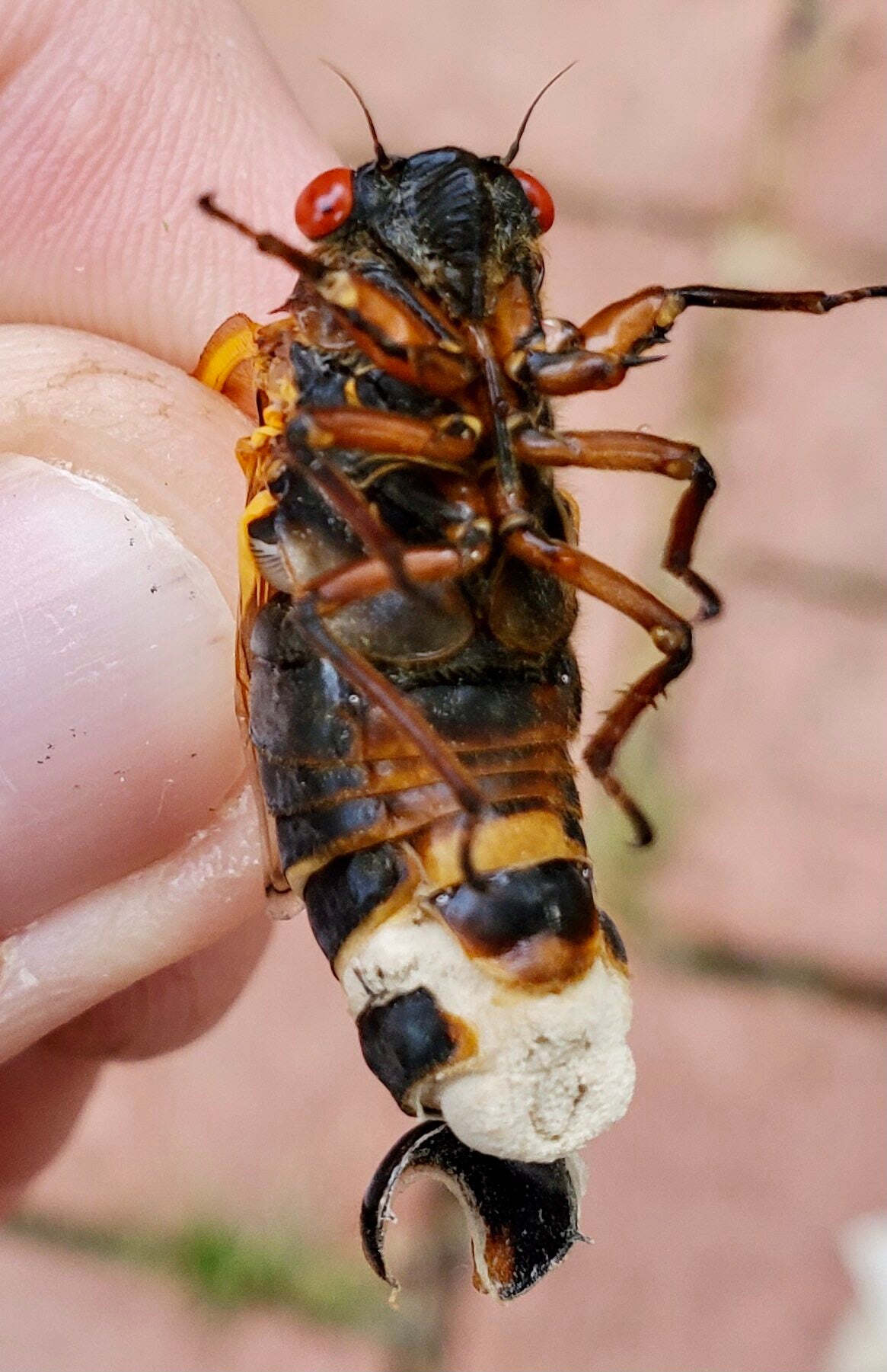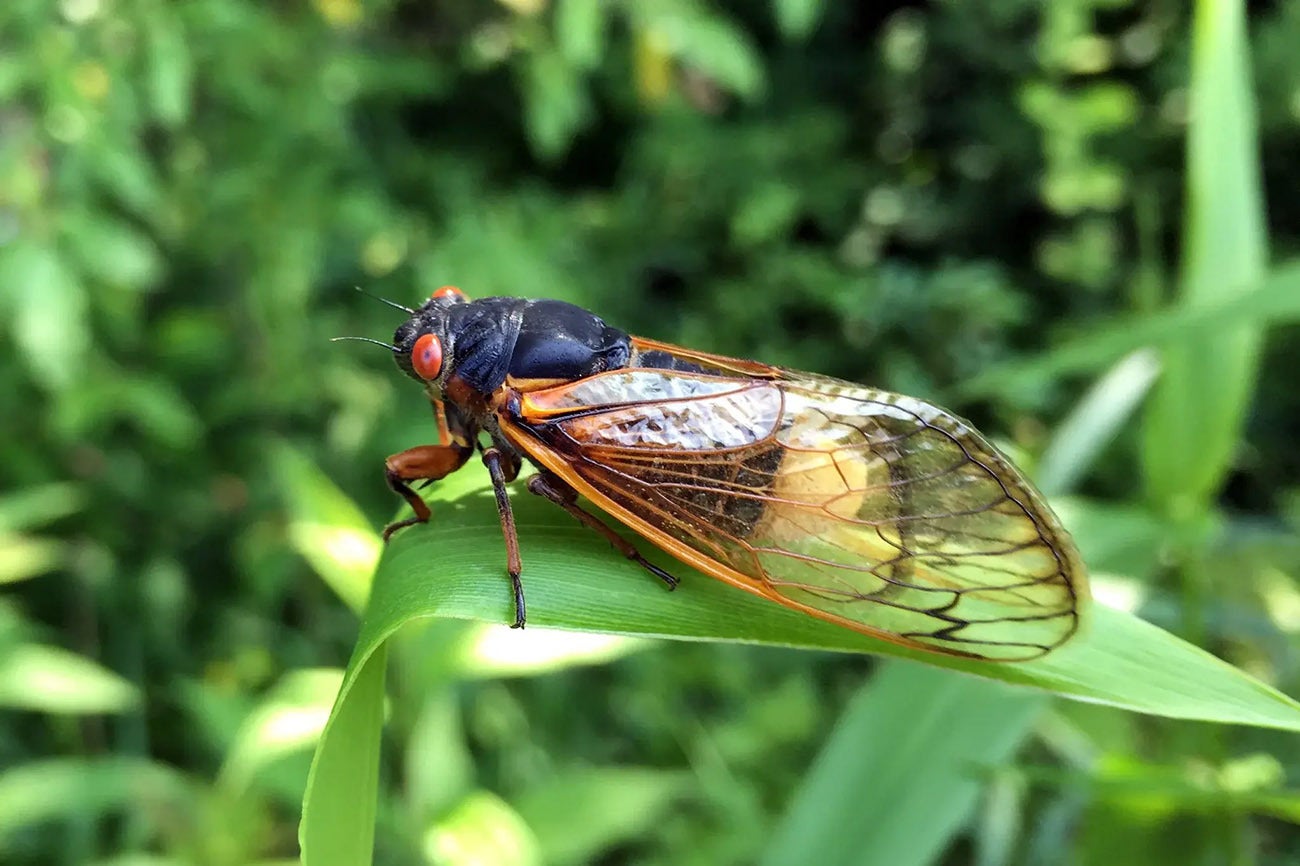As we wait for this spring and summer’s “cicadapocalypse,” when trillions will emerge across the Southern and Midwestern United States, some of the bugs may face a predicament that sounds straight out of science fiction. A sexually transmitted fungal pathogen exclusive to these periodical insects called Massospora cicadina can control them like “a puppet master.” It causes the infected cicadas to act hypersexual and infect other bugs before they eventually die.
Abdomens pierced open by a fungus
Massospora cicadina can affect both broods of periodical cicadas set to emerge in the coming weeks and months. Brood XIII–the Northern Illinois Brood–will emerge for the first time since 2007 and stretches across parts of Indiana, Wisconsin, Iowa, and northern Illinois. Some of Brood XIX–the Great Southern Brood–will overlap with Brood XIII. The Great Southern Brood last emerged in 2011 and is primarily located in Arkansas, Missouri, Tennessee, Alabama, George, North Carolina, South Carolina, and southern Illinois.
When they emerge, the cicadas molt into adults. Within a week to 10 days, this fungus opens up the backs of their abdomens. Scientists are still not sure when in their life cycle cicadas can initially become infected with Massospora cicadina, but the prevailing hypothesis is that they are infected on their way up from the ground.
[Related: This parasite deploys mucus slime balls to make ‘zombie ants.’]
According to West Virginia University mycologist Matt Kasson, the infected cicadas look like they have “a gumdrop that’s gotten wet and dropped in chalk dust,” on them.
“If you look at a fungus infected cicada, you’ll see that basically, the backside of the body has been replaced by this chalky white fungal plug,” Kasson tells PopSci. “Now, if you or I had our abdomens pierced open by a fungus or a third of our body was replaced by some parasite, we probably wouldn’t feel well. We probably wouldn’t attempt to mate. We would just feel awful, lay down, and die.”

However, infected cicadas continue to fly around as if nothing is wrong with them even as their genitalia have been consumed by a fungus. They can do this because the fungus has sent them into a period of prolonged wakefulness–a time of increased stamina.
“A hypothesis for that prolonged wakefulness is that the fungus is producing an amphetamine called cathinone,” says Kasson. Kasson says it is similar to one of the synthetic stimulants commonly found in “illegal bath salts that were banned because of the aggressiveness that [they] would cause.”
A quiet fungal ‘puppet master’
It makes the cicadas act hypersexualized, where males will continue to try to unsuccessfully mate with females and also mimic female behaviors to attract other males to mate with them. This then doubles the number of cicadas that will eventually become infected and is why it can be considered sexually transmitted.
Massospora cicadina’s ability to keep the host alive long to maximize the number of cicadas infected makes it a biotroph. It does not work like the Ophiocordyceps unilateralis fungus that takes over ants and makes them act like zombies or the fictional fungi from the television show and video game The Last of Us that pops out in a dramatic fashion.
[Related: The Cicadapocalypse is nigh. 7 cicada facts to know before it hits.]
“It’s a trick of the fungus and it’s like a puppet master,” says Kasson. “It’s pulling the strings to maximize its own survival.”
Infection rates can reach 20 percent of a cicada if the environmental conditions are perfect, but some older studies suggest that it affects about five percent of cicadas in a given brood.
Optimizing its genome
Massospora cicadina was first discovered in the mid to late 1800’s. Since periodical cicadas only emerge every 13 or 17 years, studying this fungus is difficult. It also can’t be cultured on a petri dish, so mycologists have a limited window to study them and are still not really sure where it comes from.
In 2016, Brood V emerged near Kasson’s office in West Virginia and some of his graduate students suggested they look for signs of this fungus. They were able to sequence parts of its genome to see what makes it special. What they found was the largest genome ever sequenced for a fungus at about 1.5 billion bases.

“It’s about 20 times bigger than the average human genome and it’s mostly filled with these repetitive sequences called transposable elements,” says Kasson.
They indicate that Massospora cicadina has essentially spent millions of years optimizing its genome right alongside the cicada. The fungus and insect appear to have coevolved so that it can manipulate its host in a specific way to not kill it, but ensure its own survival. According to Kasson, their data on this coevolution hasn’t been published yet, but shows some interesting evolutionary dynamics.
“What we see is a pattern where basically cicadas evolved in parallel to the fungus all together,” says Kasson.
Massospora cicadina is not transmissible to humans, but it would be smart to avoid eating any cicadas that have the white, chalky plugs on their abdomens. The infected bugs will not come with any sort of high or buzz, but do have several toxins that could be dangerous if eaten.
“We found 1,000 other chemical compounds, some of which are known mycotoxins,” says Kasson. “So proceed with caution if you’re thinking about consuming one of these cicada fungi.”





